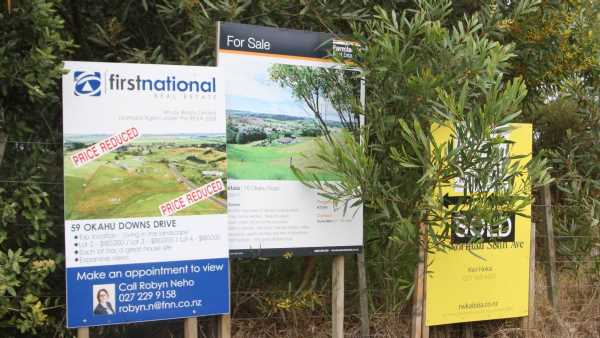Real estate agents and buyers are being starved for choice after national residential property listings plummeted nearly 30 per cent in the second greatest drop since records began 80 years ago.
The Real Estate Institute said today the total number of properties available for sale nationally last month decreased by 28.9 per cent to just 14,883, only the second time New Zealand had less than 15,000 properties available in a month since the 1960s.
The latest number of listings is down from 20,940 from last May – 6057 fewer properties compared to then.
“This is the second time that New Zealand has had less than 15,000 properties available for sale and is the second-lowest level of inventory we’ve seen since records began,” REINZ said.
Only one region bucked the trend: Gisborne enjoyed a 15 per cent rise in inventory levels.
Regions with the largest percentage decrease in total inventory levels were Bay of Plenty -46.9 per cent from 1417 to 753, Nelson -45.8 per cent from 395 to 214, the West Coast -44.4 per cent from 304 to 169 and Canterbury -42 per cent (from 2800 to 1603.
(235 kB)
Wendy Alexander, REINZ acting chief executive, said lack of listings was a factor in driving up prices.
“Looking at the overall picture, we’re still seeing that the lack of total housing supply is continuing to push up house prices.
“Properties are still selling relatively quickly for this time of year which is when we usually start to see things slow down a bit,” she said.
Median prices rose 32.3 per cent annually from $620,000 last May to $820,000 last month.
Excluding Auckland, prices were up 28 per cent annually.
Auckland prices rose 26.9 per cent annually from $905,000 to $1,148,000 which set another new record.
Papakura District and Waitakere City reached new record median prices of $900,000 and $1,050,000, REINZ said.
May national residential sales of 7550 were the highest in three years, up 1.3 per cent on April.
Excluding Auckland, 4784 properties were sold in May. Auckland had the busiest May in five years with 2766 properties sold, up 3.7 per cent increase on April and up 133 per cent annually.
Alexander said some of the annual sales volume comparisons were still a little skewed by last year’s lockdown so it won’t be until next month that we get a clearer picture of how things are really going.
“Much of the overall growth looks to be driven by the Auckland market because many regions have actually seen the lowest number of properties sold for a May month, excluding May last year, for a number of years,” Alexander said.
“This would suggest that the re-introduction of LVRs is having a strong influence on people’s ability to save the required deposit given how much house prices have risen of late,” she said.
She now expects sales volumes to stay much the same over what is usually a quieter winter period.
“However, if we don’t get more listings coming onto the market, it could be a very quiet winter indeed,” she warned.
The REINZ House Price Index, which measures the changing value of property in the market, increased 29.8 per cent annually to 3812 a new high on the index.
That is the highest annual percentage increase in the index since records began and is the twelfth consecutive month of rises.
Source: Read Full Article

/cloudfront-ap-southeast-2.images.arcpublishing.com/nzme/AH3TK7SBK2ZEDXOY64R3FJO7LI.jpg)
/cloudfront-ap-southeast-2.images.arcpublishing.com/nzme/JVESSO3L6P5O7IEHYQALUJD6OI.jpg)
/cloudfront-ap-southeast-2.images.arcpublishing.com/nzme/PBWATFGDZTA4SRZYVGA7IPTDLE.jpg)